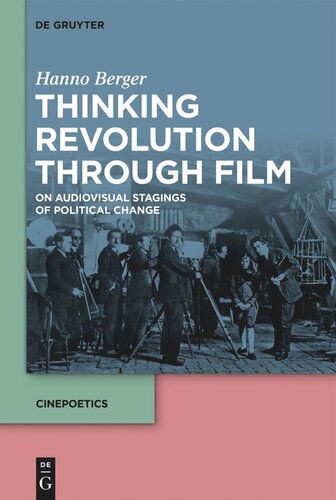

Most ebook files are in PDF format, so you can easily read them using various software such as Foxit Reader or directly on the Google Chrome browser.
Some ebook files are released by publishers in other formats such as .awz, .mobi, .epub, .fb2, etc. You may need to install specific software to read these formats on mobile/PC, such as Calibre.
Please read the tutorial at this link: https://ebookbell.com/faq
We offer FREE conversion to the popular formats you request; however, this may take some time. Therefore, right after payment, please email us, and we will try to provide the service as quickly as possible.
For some exceptional file formats or broken links (if any), please refrain from opening any disputes. Instead, email us first, and we will try to assist within a maximum of 6 hours.
EbookBell Team

0.0
0 reviewsThis book aims to redefine the relationship between film and revolution. Starting with Hannah Arendt’s thoughts on the American and French Revolution, it argues that, from a theoretical perspective, revolutions can be understood as describing a relationship between time and movement and that ultimately the spectators and not the actors in a revolution decide its outcome. Focusing on the concepts of ‘time,’ ‘movement,’ and ‘spectators,’ this study develops an understanding of film not as a medium of agitation but as a way of thinking that relates to the idea of historicity that opened up with the American and French Revolution, a way of thinking that can expand our very notion of revolution. The book explores this expansion through an analysis of three audiovisual stagings of revolution: Abel Gance’s epic on the French Revolution Napoléon, Warren Beatty’s essay on the Russian Revolution Reds, and the miniseries John Adams about the American Revolution. The author thereby offers a fresh take on the questions of revolution and historicity from the perspective of film studies.